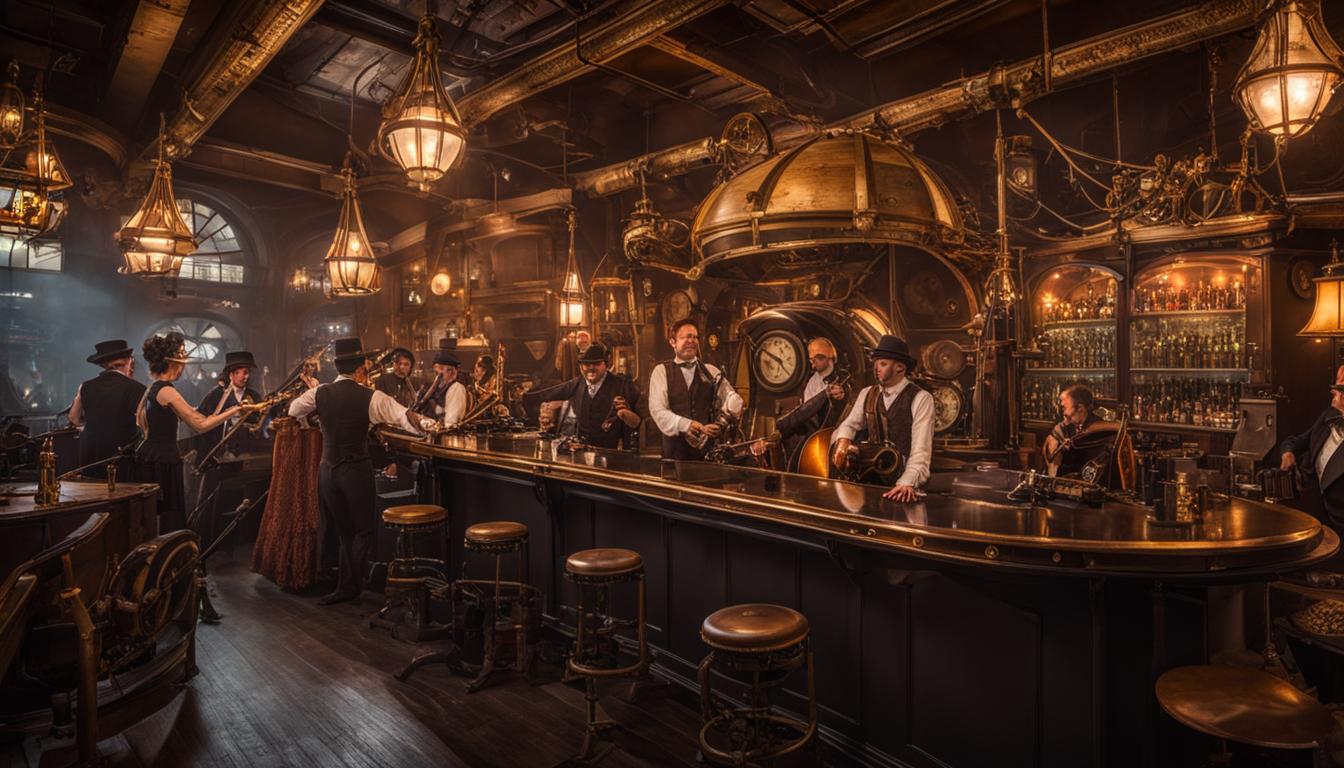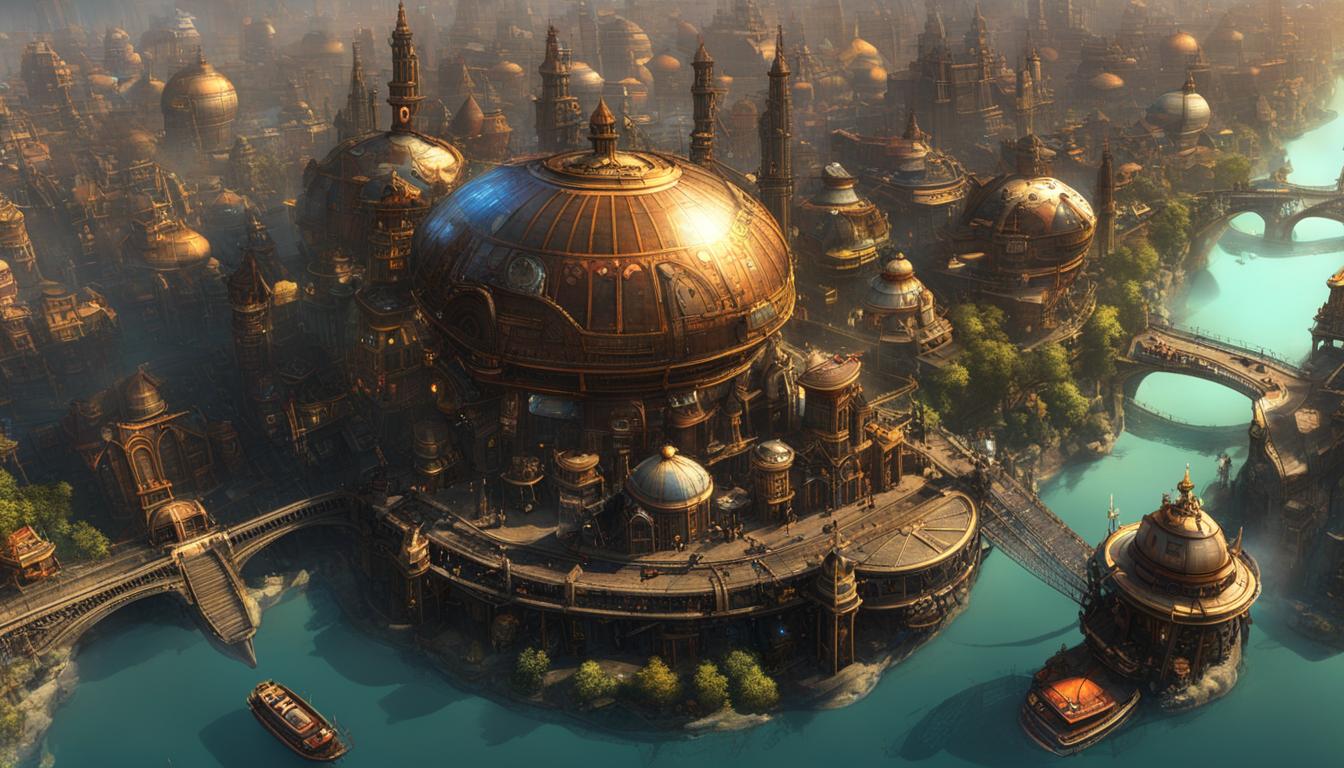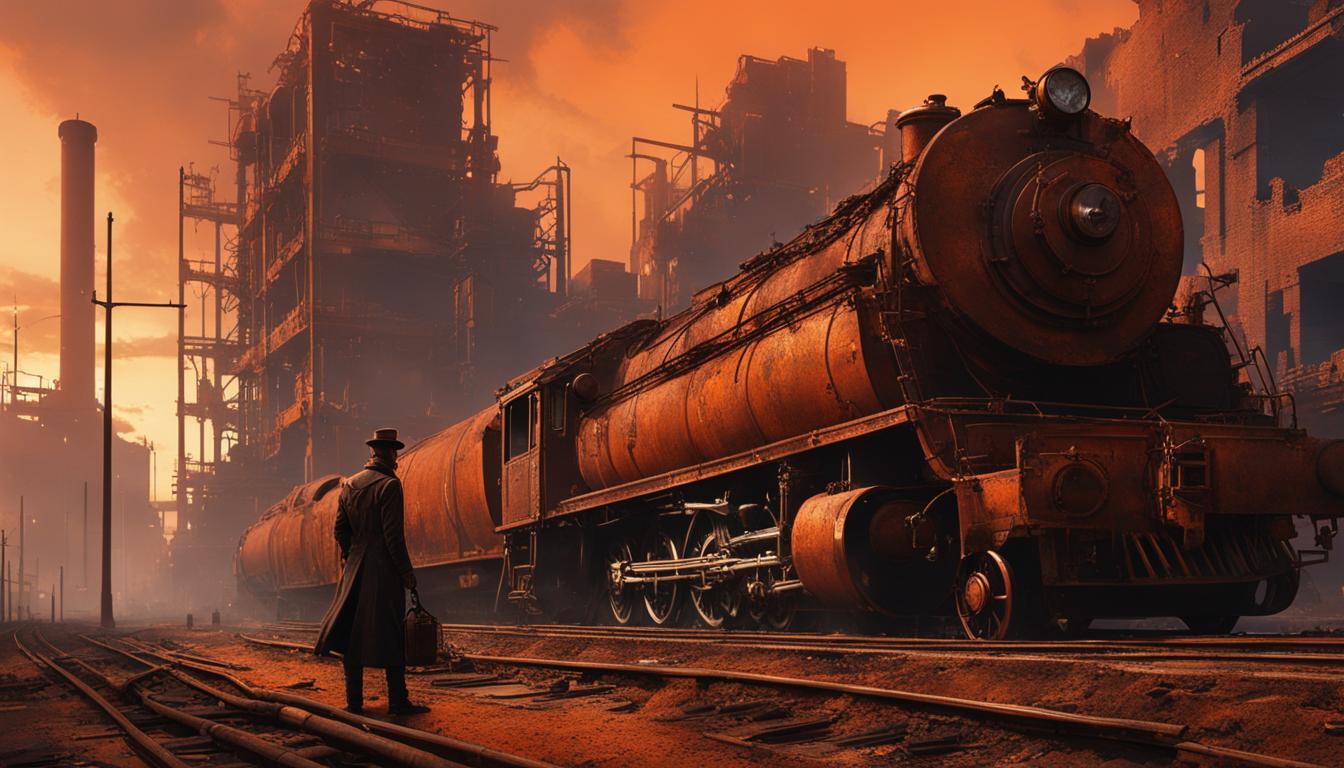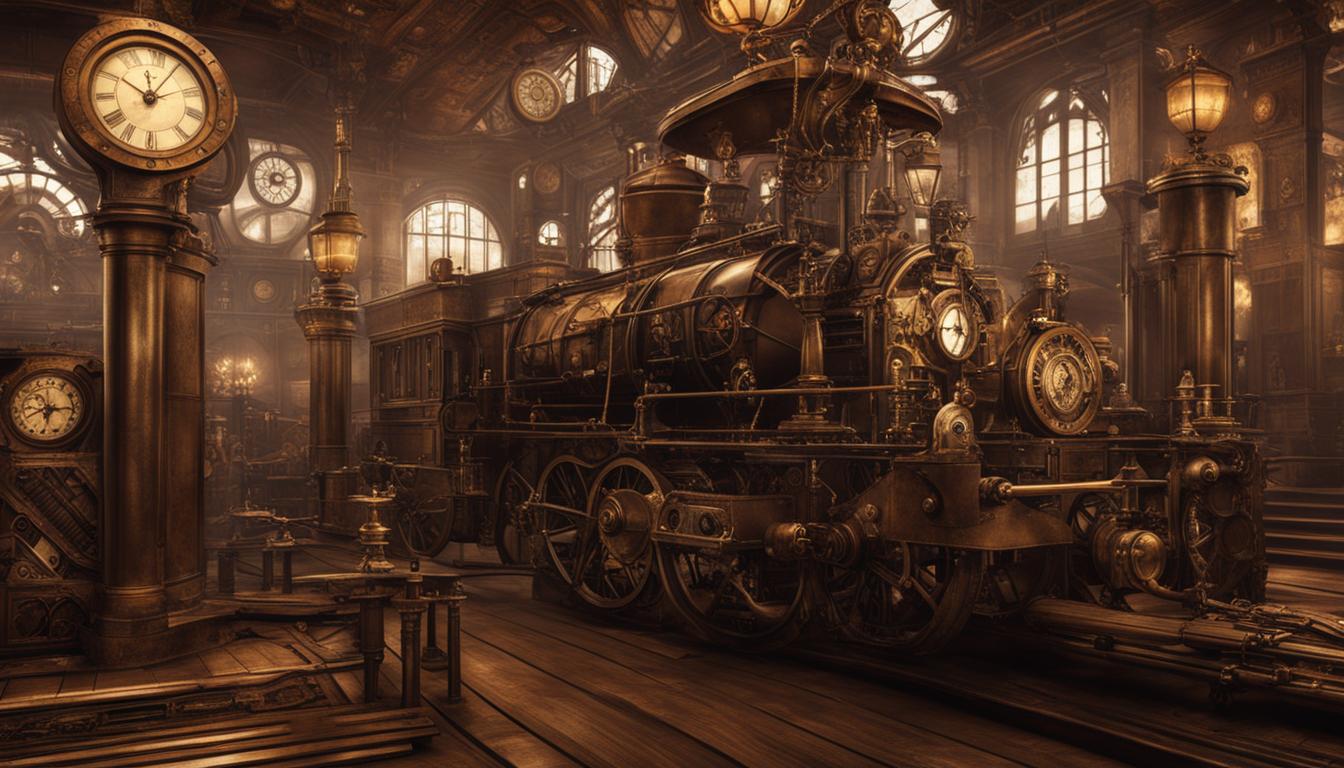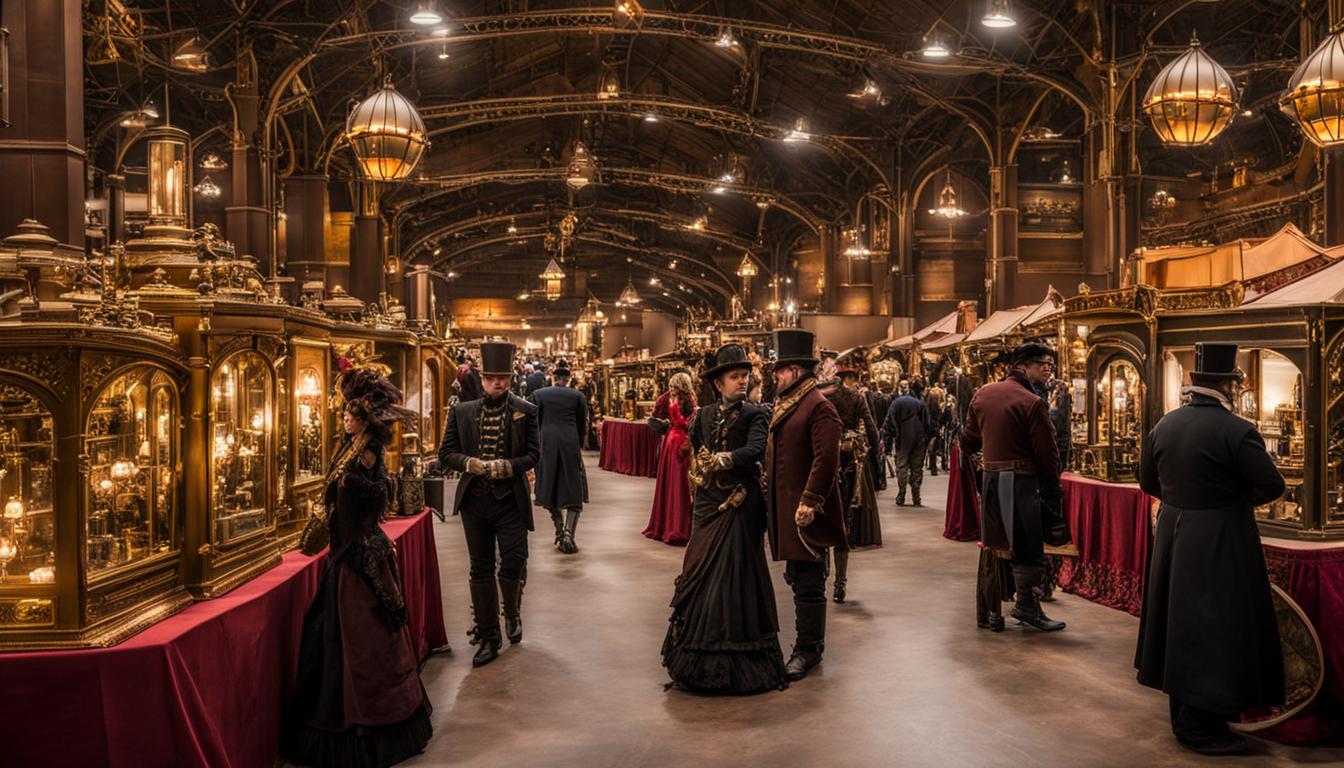The Steampunk Movement is a fascinating subculture that blends Victorian-era style with steam-powered technology. It has captivated the imagination of people around the world, inspiring creativity in art, fashion, and most notably, music. Steampunk enthusiasts are drawn to the aesthetics of the Victorian era and the ingenious possibilities of steam-powered machinery. This unique movement has given rise to a diverse range of music genres that embody the essence of Steampunk.
From orchestral compositions with a Steampunk twist to experimental electronic sounds inspired by the Victorian era, the music of Steampunk offers a rich soundscape for exploration. By combining elements of history, fantasy, and science fiction, Steampunk music transports listeners to an alternate reality where steam-powered contraptions, airships, and clockwork mechanisms reign supreme.
Join us as we delve into the enchanting world of Steampunk music genres, uncovering the musical influences that shape this extraordinary subculture. Prepare to embark on a journey through the mesmerizing soundscapes of Steampunk.
Key Takeaways:
- Steampunk music genres offer a diverse range of sounds, spanning from classical compositions to experimental electronic music.
- The Victorian era influence is at the core of Steampunk music, reflecting the themes and aesthetics of the time.
- Key figures, such as bands like Abney Park and authors like K.W. Jeter, have contributed to the growth and popularity of Steampunk music.
- Steampunk has made its way into literature, visual media, and fashion, showcasing its unique aesthetic and themes.
- The Steampunk Movement encompasses various subcultures and themes, creating a vibrant and immersive experience for enthusiasts.
Historical Context and Victorian Era Influence
The Steampunk Movement draws much of its inspiration from the rich historical context of the Victorian Era. Spanning from 1837 to 1901, the Victorian Era was a time of immense change, marked by rapid industrialization and strict social hierarchy. These elements are reflected in the themes and aesthetics of Steampunk music, creating a unique and immersive experience for its listeners.
Originally starting as a subgenre of science fiction and fantasy literature, Steampunk has since expanded into a cultural movement that encompasses various forms of artistic expression, including music. Influential works such as H.G. Wells’ “The Time Machine” and Jules Verne’s novels have played a significant role in shaping the Steampunk genre, providing a foundation for its themes of alternate histories, technological innovation, and exploration.
The Victorian Era’s influence on Steampunk can be seen not only in its literature but also in its music. Steampunk musicians often incorporate elements of Victorian-era instrumentation and aesthetics into their compositions, evoking a sense of nostalgia and adventure. This fusion of past and present creates a unique sonic landscape that transports listeners to a bygone era, fueled by the imagination and ingenuity of the Victorian Age.
The Victorian Era: A Time of Change and Ingenuity
“Steampunk music draws inspiration from the Victorian Era, a time of rapid industrialization and strict social hierarchy. It combines elements of nostalgia, adventure, and ingenuity to create a unique sonic experience that transports listeners to a bygone era.” – Music historian
| Key Influences | Notable Works | Genre Characteristics |
|---|---|---|
| Victorian-era instrumentation | H.G. Wells’ “The Time Machine” | Blend of past and present elements |
| Rapid industrialization | Jules Verne’s novels | Themes of alternate histories and technological innovation |
| Strict social hierarchy | Evoke a sense of nostalgia and adventure |
Through its rich historical context and Victorian Era influence, Steampunk music offers a captivating journey into a fantastical world of steam-powered technology, daring adventures, and the wonders of a bygone era. As the popularity of the Steampunk Movement continues to grow, it is evident that its historical roots and Victorian aesthetics will remain fundamental to its enduring appeal.
Key Figures in the Steampunk Movement
The Steampunk Movement is not just a visual aesthetic; it is a cultural phenomenon that has inspired many talented musicians and artists. From bands that incorporate steampunk themes into their music to authors who have written influential steampunk novels, there are several key figures who have made significant contributions to the growth and popularity of the steampunk genre.
Steampunk Bands and Genres
One of the driving forces behind the steampunk music scene is the emergence of bands that incorporate the steampunk aesthetic into their music and performances. Bands such as Abney Park, The Clockwork Quartet, and The Cog is Dead have become synonymous with the genre and have helped to popularize it among fans. These bands often blend elements of traditional genres like rock, folk, and electronic music with steampunk themes, creating a unique and captivating sound.
| Band Name | Genre | Steampunk Themes |
|---|---|---|
| Abney Park | Industrial, Darkwave | Airship pirates, Victorian-era adventures |
| The Clockwork Quartet | Chamber pop, Baroque rock | Mechanical wonders, clockwork contraptions |
| The Cog is Dead | Steampunk rock | Mad scientists, eccentric inventors |
Music Contributors in Steampunk
In addition to bands, there are also individual musicians who have made significant contributions to the steampunk genre. Their unique musical styles and captivating performances have helped to shape the sound of steampunk music. Some notable contributors include the talented cellist Unwoman, whose hauntingly beautiful melodies add a touch of elegance to the genre, and the multi-instrumentalist Professor Elemental, known for his humorous and witty steampunk-inspired rap.
“Steampunk music allows me to combine my love for history, technology, and music in a way that is truly unique. It’s an exciting genre that allows for a lot of creativity and experimentation.” – Unwoman
These talented individuals have not only created music that resonates with steampunk fans but have also contributed to the overall growth and development of the genre. Their passion and dedication to their craft have helped to shape the steampunk music scene into what it is today.
Steampunk in Literature and Visual Media
Steampunk has transcended its roots in science fiction and fantasy literature to become a prominent feature in various forms of media, including novels, graphic novels, films, and TV shows. The genre’s unique aesthetic and themes of Victorian-era technology and alternate histories have captured the imagination of audiences around the world.
In literature, steampunk novels blend elements of the Victorian era with imaginative reimaginings of technology. Classic works like H.G. Wells’ “The Time Machine” and William Gibson and Bruce Sterling’s “The Difference Engine” serve as prime examples of steampunk literature, exploring the intersection of science, adventure, and the Victorian era. These novels transport readers to a world filled with steam-powered contraptions, airships, and clockwork mechanisms, creating a rich and immersive reading experience.
“Steampunk is like a time-traveling expedition that combines the wonders of the past and the possibilities of the future.”
The influence of steampunk can also be seen in visual media, with films and TV shows embracing the genre’s aesthetic and adventurous spirit. Movies such as “Wild Wild West” and TV shows like “Sherlock Holmes” showcase the blend of Victorian elegance and advanced technology that defines steampunk. These visual adaptations transport viewers to alternate worlds where steam-powered inventions and mechanical wonders take center stage.
Steampunk has also left a lasting impact on the world of fashion and design. The genre’s distinctive aesthetic, characterized by corsets, goggles, top hats, and intricate clockwork-inspired accessories, has become a popular choice for enthusiasts and designers alike. Artists and creators infuse their work with steampunk elements, offering a visually engaging and thought-provoking exploration of the genre’s themes and motifs.
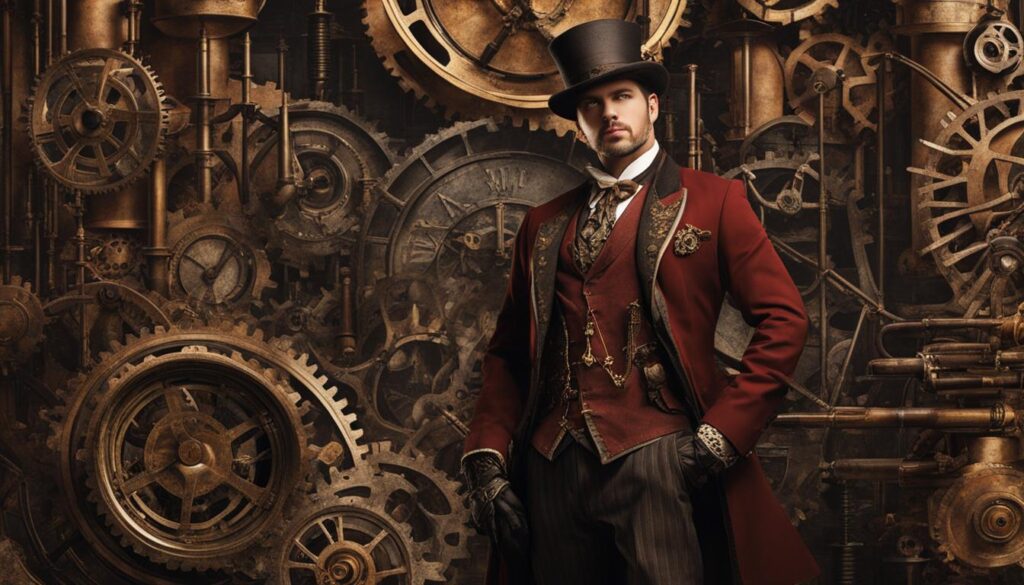
The Steampunk Aesthetic and its Influence
The steampunk aesthetic’s enduring appeal lies in its ability to blend nostalgia for the past with a sense of wonder for the future. It has captivated audiences across various forms of media, inviting them to explore a world that combines the elegance of the Victorian era with the marvels of steam-powered technology.
Literature and visual media serve as gateways to the steampunk universe, allowing readers and viewers to immerse themselves in a world of adventure, intrigue, and imagination. The genre continues to evolve and inspire artists and creators, shaping the cultural landscape and leaving an indelible mark on popular culture.
Steampunk Subcultures and Themes
The Steampunk Movement has given rise to a diverse range of subcultures, each with its own unique music, fashion, and artistic expression. These subcultures delve deep into the Steampunk aesthetic and explore various themes, creating a rich tapestry of creativity within the Steampunk community.
One of the fascinating aspects of Steampunk subcultures is the exploration of musical themes. Steampunk music encompasses a wide range of genres, from classical compositions infused with a Steampunk twist to experimental electronic music inspired by the Victorian era. This diversity allows for a vibrant and ever-evolving music scene within the Steampunk community, with artists pushing boundaries and exploring new sonic territories.
“Steampunk music is a fusion of old and new, combining the elegance of the Victorian era with the innovation of modern technology. It’s a genre that invites exploration and experimentation, resulting in a rich tapestry of soundscapes that transport listeners to a world of clockwork contraptions and steam-powered wonders.” – Music Critic
Exploring the diverse music in the Steampunk culture is an adventure in itself. From the melancholic melodies of a mechanical orchestra to the high-energy beats of a brass-heavy band, Steampunk music captures the essence of the Steampunk movement, taking listeners on a journey through time and imagination.
| Steampunk Music Genres | Key Characteristics |
|---|---|
| Neo-Victorian | Blending Victorian-era instrumentation with modern production techniques. |
| Industrial | Heavy use of mechanical sounds and industrial-inspired beats. |
| Clockwork | Incorporation of ticking clock sounds and intricate mechanical rhythms. |
| Steampunk Metal | Merging the aggression of metal music with Steampunk aesthetics and themes. |
As Steampunk continues to captivate the imagination of people worldwide, the exploration of diverse music genres within the Steampunk culture offers endless possibilities for artistic expression and creativity. Whether you’re a fan of classical symphonies infused with Steampunk elements or prefer the edgier sounds of industrial Steampunk, there is something for everyone in the rich musical tapestry of the Steampunk subcultures.
Conclusion
The Steampunk Movement has left an indelible mark on the global cultural landscape, captivating enthusiasts and creators alike with its Victorian-era aesthetics and steam-powered allure. From its humble beginnings as a subgenre of science fiction and fantasy literature, Steampunk has evolved into a multi-faceted phenomenon that encompasses art, fashion, and music.
With its global impact, Steampunk has transcended borders and ignited the imaginations of individuals around the world. From the cobblestone streets of London to the bustling metropolises of Tokyo, the influence of Steampunk can be felt far and wide. Its ability to bridge the gap between past and future, tradition and innovation, has resonated with a diverse range of individuals eager to explore the possibilities of an alternate reality.
As the Steampunk Movement continues to grow, emerging trends are shaping its future. New themes and styles are being integrated into the Steampunk aesthetic, pushing the boundaries of what is possible within this imaginative realm. It is a testament to the movement’s enduring appeal that it can constantly reinvent itself, attracting fresh minds and inspiring new creations.
With its enigmatic allure and captivating fusion of history and fantasy, Steampunk shows no signs of slowing down. As the gears of time turn, the Steampunk Movement will undoubtedly continue to shape and inspire the cultural landscape, offering a glimpse into a world where steam-powered dreams become a reality.
FAQ
What is Steampunk music?
Steampunk music is a genre that combines Victorian-era style with steam-powered technology, creating a unique musical sound and aesthetic.
Who are some key figures in the Steampunk Movement?
Bands such as Abney Park, The Clockwork Quartet, and The Cog is Dead have played a significant role in popularizing Steampunk music. Authors like K.W. Jeter and William Gibson have also contributed to the movement through their steampunk novels.
How has Steampunk influenced literature and visual media?
Steampunk has made its way into novels, graphic novels, films, and TV shows, incorporating the Steampunk aesthetic and themes. Works like “The Time Machine” and “The Difference Engine” explore alternate histories and Victorian-era technology.
What are some subcultures within the Steampunk Movement?
Steampunk has given rise to vibrant music scenes, conventions, and cosplay. These subcultures celebrate the Steampunk aesthetic and often explore themes of alternate histories and social commentary.
How has Steampunk had a global impact?
Steampunk has gained popularity worldwide, with enthusiasts and creators embracing the Victorian-era aesthetics and steam-powered technology. It continues to evolve and shape the cultural landscape in various creative forms.

